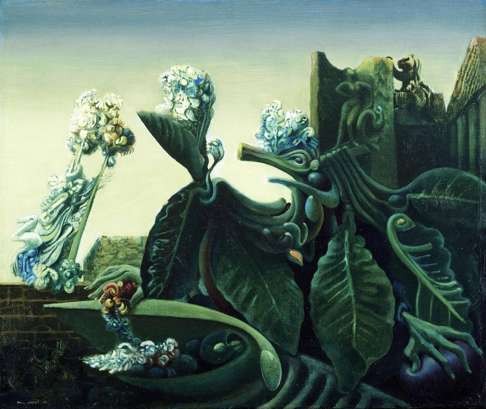
Book review: The Last Days of New Paris – a surreal masterpiece
Art meets the occult meets Fascism in China Mieville’s reimagining of oppression and resistance in Nazi-controlled France


by China Miéville
Del Rey
4.5 stars
Page for page, there is no one generating more utterly unfamiliar ideas than author China Miéville (Perdido Street Station, The City and the City) – and the glossary of monsters in his latest novel, The Last Days of New Paris, could support a full book for every entry.
There’s so much absurd beauty among the fauna in this story of surrealist art come to life in Nazi-occupied France, in fact, that the author’s subtler points about imagination and oppression arrive as a surprise during the pitched battle between the magical resistance and literally Hellish fascism at his book’s climax.
During the second world war, the story goes, magician Jack Parsons and a group of surrealists including André Breton and Yves Tanguy have a magical accident that the book’s heroes come to call the S-blast. It’s an occult explosion that results in the sort of horrifying unintended consequences in which Miéville specialises: the surrealists’ work becomes real and animated with magical force.


Given its baroque weaponry, its mini-monster manual and its straightforward, action-filled plot, the slim book is almost a Dungeons and Dragons campaign in novel form, given narrative heft by the spy-thriller flashback plot that unravels the mystery of the S-blast itself and the whole tale’s improbable nearness to reality. Main à plume really was a band of surrealist resistors under Vichy France. Even the pajamas worn as armour by the book’s hero, Thibaut, have origins in a surrealist poem by Simone Yoyotte.
With a woman named Sam who may or may not be a journalist, Thibaut picks his way through the wreckage of France nine years after Parsons’ accident in order to stop the worst monster of them all — a German experiment called Fall Rot (Case Red) that will somehow combine surrealist magic and demonic force. Its name, too, is a nod to real-world events: the actual Case Red was the German operation that overwhelmed France. What Sam and Thibaut find, however, will likely surprise history buffs.
The book’s wonderful strangeness is heightened by Miéville’s revelation of his weirdest weirdnesses second- and third-hand. Sam explains via rumour in one passage: “ ‘He had one of you-know-who’s telephones, that was … ’ Her hands describe it. ‘A lobster. With wires. If you held it to your ear it would grab for you and get its legs tangled in your hair, but it could tell you secrets. It never said anything to me.’ “
Perhaps the most amazing creature in the book is the exquisite corpse – a work of art created by more than one artist – by Breton, Tanguy and Jacqueline Lamba, a sort of teetering, shambling old-man-monster made in three crazily different styles, both wondrously impractical and a walking testament to the necessary, progressive power of art. It vigorously defends the novel’s heroes and works as a standing rebuke to fascism. Here is a creature Frankensteined together by weirdos, Miéville seems to say: look at its superiority to sleek unity.
The finale of The Last Days of New Paris is both moving and disturbingly timely: imagination has often been used to puncture fascism; now Miéville asks whether fascism can defeat and subvert art. That question, cunningly phrased, challenges not just surrealism but Miéville’s writing of this book. That he answers it hopefully, and convincingly, would seem to justify both undertakings.
Tribune News Service